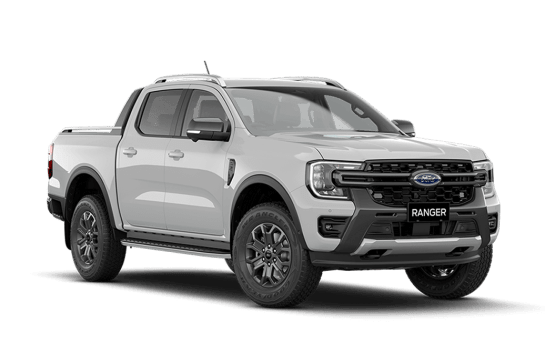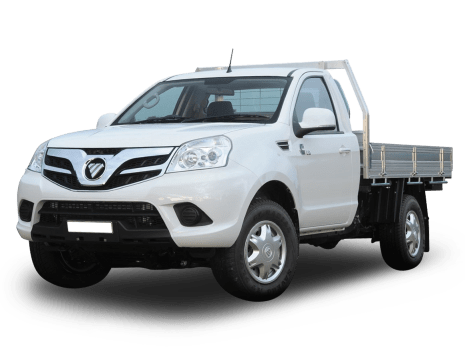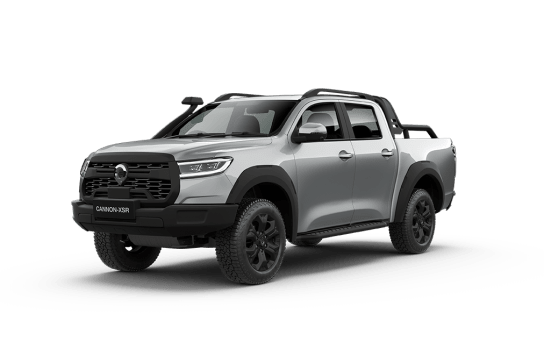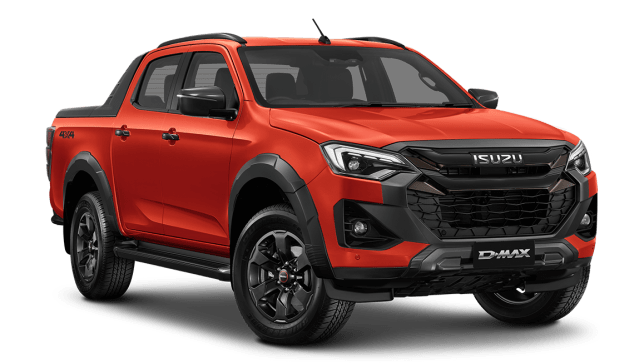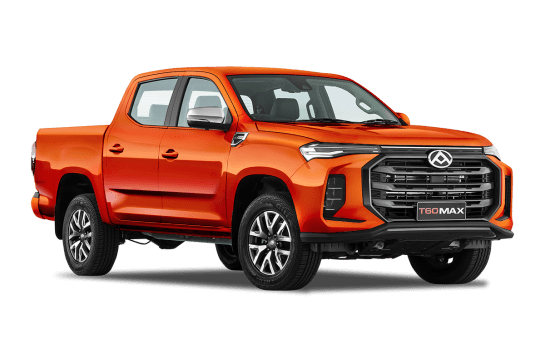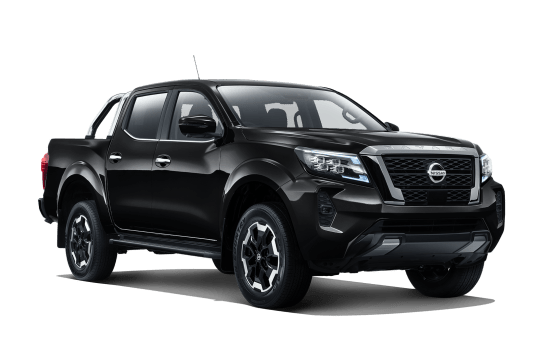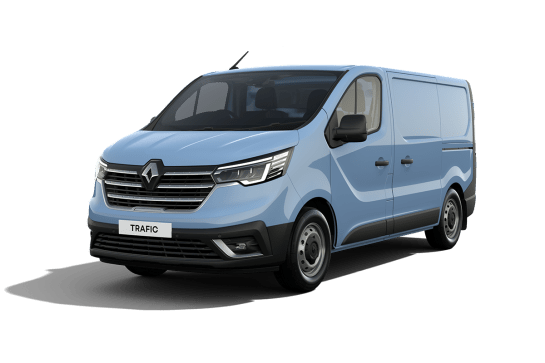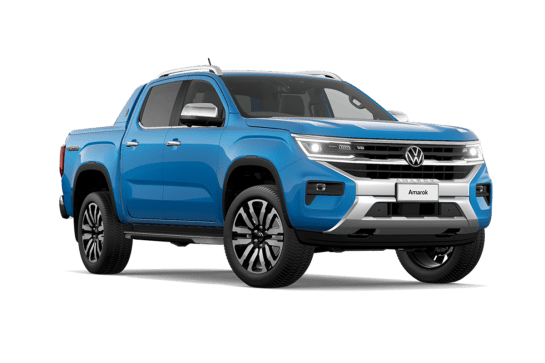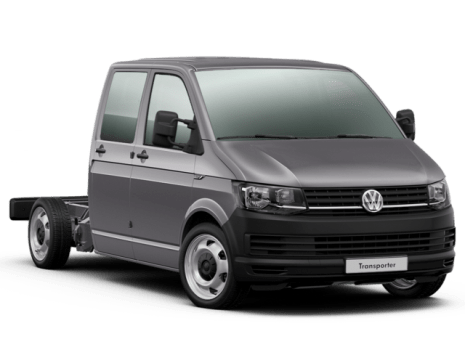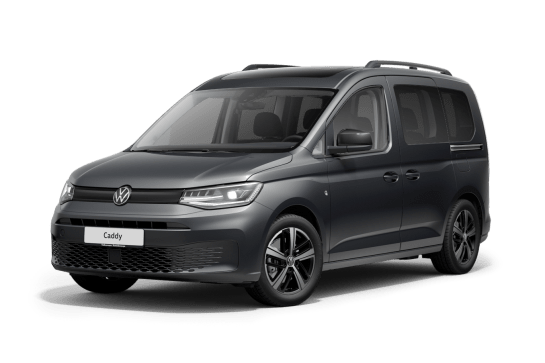
Volkswagen Caddy 5 VS Volkswagen Amarok
Volkswagen Caddy 5
Likes
- People mover/van in one
- Performance and comfort
- Fuel economy
Dislikes
- List price
- Tow ball download
- Turning circle
Volkswagen Amarok
Likes
- Off-road ability
- Value
- Safety
Dislikes
- No adjustable rear ventilation
- No back seat USBs
- Firm suspension
Summary
Volkswagen Caddy 5
Volkswagen’s Caddy Life seven-seater combines compact dimensions with efficient use of internal space and seating flexibility to deliver an effective combination of comfort and utility.
We recently spent a week with the premium model to see if this people-mover can meet the diverse requirements of busy families for work and play, in a people-mover segment dominated by the Kia Carnival.
Read more about
- Every new Volkswagen electric car, SUV and passenger car: VW kicks off new model offensive with ID.4, ID.5, ID.Buzz, Golf facelift, next-gen Tiguan and Multivan
- Chinese rivals present 'serious situation' that could cause Volkswagen to close its factory doors for the first time
- Volkswagen Touareg 2025 review: 210TDI Elegance
| Safety rating | |
|---|---|
| Engine Type | 2.0L turbo |
| Fuel Type | Diesel |
| Fuel Efficiency | 4.9L/100km |
| Seating | 7 seats |
Volkswagen Amarok
I couldn’t say I’m familiar with Australia’s inland deserts. I thought there were two or three - the Simpson, Gibson, maybe the Great Sandy.
But did you know there are 10? And Volkswagen knows each intimately thanks to a recent Guinness world record verified crossing of them all… in one go.
It took a tweaked-up Amarok six days and 17 hours if you must know, and to celebrate VW has created a limited build (300 unit) version of the dual cab ute called, you guessed it… the 10 Deserts Edition.
Read more about
- Record-breaking Aussie desert assault inspires locally-developed special 2025 Volkswagen Amarok to challenge Ford Ranger, Ineos Grenadier Quartermaster, Isuzu D-Max Blade, LDV T60 Max Plus, Mitsubishi Triton, Nissan Navara Warrior, Toyota HiLux GR Sport
- Volkswagen Touareg 2024 review
- Seven-seat 2025 Volkswagen Tayron SUV revealed ahead of Paris motor show debut: Tiguan Allspace replacement poised to compete with Hyundai Santa Fe, Toyota Kluger and Kia Sorento
And we were invited to steer it on-road and over a variety of challenging (public) off-road trails around Mt Macedon and Cobaw, about an hour’s drive north-west of Melbourne.
Not quite the Strzelecki Track, but tough enough to see if this special VeeDub has what it takes to drive your off-highway ambitions. So, stay with us!
| Safety rating | — |
|---|---|
| Engine Type | — |
| Fuel Type | — |
| Fuel Efficiency | —L/100km |
| Seating | — |
Verdict
Volkswagen Caddy 58.3/10
Families could easily grow to like the Caddy Life. It’s not only enjoyable and economical to drive but its surprisingly spacious cabin offers comfortable seating for all three rows, two of which can be easily removed and replaced as required. It would be equally competent serving as both a weekday family carry-all and weekend escape machine.
Volkswagen Amarok8/10
It’s been developed with adventurous four-wheel-drive enthusiasts in mind, but we don’t know exactly what it will cost. However, given the current ballpark estimate, the value equation will likely stack up well and things like safety and the ownership package are solid. And we know it’s tough and capable in rough going, which is the main point, after all. This package works brilliantly well.
Note: CarsGuide attended this event as a guest of the manufacturer, with travel, accommodation and meals provided.
Design
Volkswagen Caddy 5
The front wheel-drive Caddy Life rides on a 'Maxi' 2970mm wheelbase with MacPherson strut front suspension, multi-link rear suspension, electronic-assisted power-steering and four-wheel disc brakes. It has a 12.1-metre turning circle, which is larger than some one-tonne vans.
The spacious and airy feel of its cabin belies its relatively compact external dimensions, which are shorter in wheelbase, shorter in overall length and narrower (excluding door mirrors) than the Kia Carnival.
However, the Caddy Life is slightly taller than the Kia, resulting in generous headroom for all which enhances its spacious feel.
As a result, this cabin can comfortably accommodate passengers ranging from small kids to lanky teenagers to tall adults in all three rows, which we confirmed courtesy of my 186cm frame.
There’s ample space for the driver and front passenger and the second-row seating also offers adequate knee room, even for someone my height when sitting behind the driver’s seat in my position.
There’s less knee room in the centre position, though, due to the protruding console.
The second-row base cushions, which are split roughly 70/30, don’t have slide adjustment but you can alter the backrest angle. Although three kids could fit comfortably here, larger teens and adults would have limited shoulder room. So, for long trips with grown-ups, the second-row would work best with two.
And even though the third-row base-cushions are also fixed, the rearmost seating is remarkably spacious. Although the flat floor results in elevated knees for someone my height, it still provides enough foot, knee, shoulder and headroom for adequate comfort, so kids would find it even more accommodating.
Volkswagen Amarok
The Amarok is already a sleek-looking dual cab and the ‘Clear White’-only 10 Deserts Edition picks up unique black badging, a standard black tonneau cover and 17-inch satin ‘Asphalt Black’ alloy wheels shod with all-terrain rubber. More hardcore off-road tyres are a no-cost option, which is a nice touch, and there are black side steps and a ‘Asphalt Black’ mesh grille with ‘Bolder Grey’ inserts.
An ARB lift kit raises ground clearance by 40mm, from an already decent 235mm to 275mm, and ‘Genuine VW’ underbody protection is added.
The interior is cool, calm and collected in typical VW fashion with a predominantly dark grey colour palette highlighted by silver and brushed metal accents.
The 8.0-inch digital instrument display and 10.1-inch multimedia screen look contemporary without being garish, and there’s a workable mix of digital and physical controls, with climate being the former and audio the latter.
Practicality
Volkswagen Caddy 5
With its 1742kg tare weight (unladen) and 2450kg GVM, the Caddy Life has a 708kg payload rating. In real world use, seven large adults would use up most if not all of that before you could add any luggage, so keep this load limit in mind if you need to carry half a rugby team to training.
However, for most urban requirements involving kids, this weight limit would be more than adequate if you need to haul them and their friends and their gear for a multitude of tasks, from weekday school runs to weekend sports to holiday getaways. And up to 100kg of that 708kg can be carried on the roof, which is ideal for storage solutions like roof-pods.
The Caddy Life is also rated to tow up to 1500kg of braked trailer. And with its generous 4213kg GCM rating (or how much it can legally carry and tow at the same time), that means it can haul its maximum payload while towing its maximum trailer weight, which is a handy capability for many work or play duties.
However, given the tow ball download (TBD) limit is only 75kg, that could present a challenge for those wanting to tow 1500kg given that TBD is usually around 10 per cent of trailer weight (or in this case about double the stated TBD limit).
Even so, one of the Caddy Life’s best features is the versatility of its second and third-row seats, which can be configured to significantly expand load volume.
For example, the backrests on both rows can be folded flat to provide a raised load floor sufficient for carting many bulky items from a load of cardboard for recycling to flatpack furniture.
However, if you need maximum load volume, the second and third rows can be easily removed from the vehicle to create a spacious van.
For starters, there’s more than half a metre of floor length and almost half a cubic metre of load volume behind the third-row seats, which is ideal for grocery shops, school bags and the like.
This expands to more than 1.4 metres of floor and more than 1.7 cubic metres of load volume when the third-row seat is removed.
This space expands again to more than 2.2 metres of floor length and more than 3.0 cubic metres of load volume with both the second and third rows removed.
That’s in the same ballpark as the small commercial van class (under 2.5-tonne GVM) and the sliding doors on either side provide similar load access, so in terms of moving either people or cargo, the versatility of this design makes it very efficient at both.
Given its primary role as a people-mover, there’s generous internal storage for personal items, starting with a large-bottle holder and deep bin in the base of each front door. There’s also a handy driver’s drawer in the right-side dash, open storage in the centre dash-pad and a large glove box.
The centre console has a pair of small-bottle/cupholders and there’s a lidded box at the rear. There’s also a full-width overhead shelf which can hold heaps of stuff and doesn’t feel too close to your forehead due to the generous roof height.
Second-row passengers get a small-bottle/cupholder and bin in each sliding door, plus there are pockets on the front seat backrests and some handy fold-down trays complete with cupholders which are ideal for snacks, games etc on long trips.
Third-row passengers are also well catered for with small-bottle/cupholders and storage on each side.
Volkswagen Amarok
At just over 5.3m long, a little more than 1.9m wide and close to 1.9m tall (with a 3270mm wheelbase) the Amarok lives within the same dimensional footprint as key competitors like the Ford Ranger, Toyota HiLux and Isuzu D-Max.
Up front, it's easy to get in and out thanks to big door apertures and this limited edition’s slightly higher ride height. There’s plenty of breathing space and good separation from your co-pilot.
In terms of storage there are door bins with room for decent size bottles, a couple of cup/bottle holders in the centre console, a lidded storage box between the seats (which doubles as a centre armrest), a wireless charging pad ahead of that, two glove boxes, a shallow well in the centre of the dashtop and a drop down sunglasses holder.
In the back, sitting behind the driver’s seat set to my 183cm position, there’s plenty of head, leg and toe room.
Three full-size adults across the second row will be okay for short to medium trips and a trio of up to late teenage kids will be fine. There are bins in the doors with room for medium-size bottles, a fold-down centre armrest with a pair of cupholders and map pockets in the front seat backs.
On the not so good side, there’s no individual ventilation control for back-seaters and the only power option is a 12-volt socket with USB-A and -C ports confined to the front only. Shout out for the USB input in the mirror housing for a dash cam, though.
The roughly 1.5m long by 1.2m wide illuminated tray will accommodate a Euro pallet between the wheel arches. There are multiple tie-down rings and tailgate closing is assisted.
Maximum towing capacity for a braked trailer is 3500kg (750kg unbraked), a full-size spare is on-board and there are two towing hooks at the front.
Price and features
Volkswagen Caddy 5
Our Life test vehicle is the premium offering in the two-model Caddy range, in this case powered by a TDI 320 2.0-litre, four-cylinder, turbo-diesel engine paired with a seven-speed dual-clutch automatic transmission.
Its list price of $56,790 is considerably more than the base model Kia Carnival diesel ($52,380) which offers an extra seating position. Our example is also finished in 'Fortana Red' metallic paint, which is an extra-cost option.
As the top-shelf model, the Caddy Life comes standard with 17-inch ‘Barahona’ alloys and 215/55R17 tyres plus a full-size steel spare, heated door mirrors, a power tailgate and side/rear privacy glass.
There’s also tasteful chrome detailing on the grille, roof-rails, sliding-door rails and body badges along with colour-coded bumpers and door-handles. Combined with the optional premium paint, this bling creates an upmarket appearance consistent with its premium model status.
Inside the carpeted and surprisingly spacious cabin are three rows of seating (the second and third rows are easily removable) neatly finished in ‘Trialog’ diamond-quilt-style fabric trim.
The driver is treated to keyless start, a multi-adjustable seat including four-way power lumbar support, a leather-wrapped multi-function steering wheel and a large left footrest.
There’s also an 8.25-inch colour touchscreen which serves as central command for the four-speaker multimedia system, with digital radio and multiple connectivity including Apple CarPlay and Android Auto.
Some vehicle settings, including climate control, auto stop/start etc are also touchscreen-controlled, but thankfully audio volume and tuning still use physical dials.
The family-friendly cabin also includes dual-zone climate control, heated front seats, wireless phone-charging, two USB-C ports, two 12-volt sockets, fold-down tables and heating/cooling vents for second-row passengers, LED reading lights, rear luggage compartment cover, lots of places to store stuff and more.
Volkswagen Amarok
Although it’s being cagey on exact pricing at this stage, Volkswagen says the Amarok 10 Deserts Edition will be positioned between $65 and $70K (likely closer to former than the latter).
The Amarok Life TDI500 this car is based on boasts a healthy standard equipment list including LED headlights, daytime running lights and fog lights, adaptive cruise control (with stop/go), alloy rims, a towbar, wireless charging and tailgate lift assist plus wireless Android Auto and Apple CarPlay.
There’s also six-speaker audio (with digital radio), single-zone air-con, electrically folding and heated exterior mirrors (with courtesy lamps), auto headlight and high-beam control, a leather-trimmed steering wheel and gearshift, and auto rain-sensing wipers.
Not a bad fit-out, even before adding the extra 10 Deserts kit (see Design) and that prospective price puts it between the existing Amarok TDI500 Life ($59,490) and Style $69,740), both before on-road costs, and a step up from Ford’s close to $57K limited-run (1500 unit) Ranger Black Edition.
Under the bonnet
Volkswagen Caddy 5
Our premium grade Caddy Life is powered by VW’s excellent 2.0-litre four-cylinder turbo-diesel which produces 90kW of power at 2750-4250rpm and 320Nm of torque between 1500-2500rpm.
It’s paired with an equally refined seven-speed dual-clutch automatic gearbox, which provides the option of sequential manual-shifting in 'Sport' mode using the steering wheel-mounted paddle shifters. There's also an electronic diff lock.
Worth noting there's also a TSI220 version powered by a 84kW/220Nm 1.5-litre four-cylinder petrol engine.
Volkswagen Amarok
The record-breaking Amarok was a V6 Style, but this limited edition is based on the Amarok TDI500 Life, so a 2.0-litre turbo-diesel four-cylinder engine sits under the bonnet, sending 154kW/500Nm to the rear, or all four wheels, via a 10-speed automatic transmission.
This twin-turbo, dual-overhead cam unit is shared with the Amarok’s twin under the skin, the Ford Ranger (where it’s referred to as the ‘Bi-Turbo’), and the selectable all-wheel-drive system features three driving modes - 2H, 4H & 4L - and there’s a mechanical rear diff lock.
Efficiency
Volkswagen Caddy 5
VW claims an official combined (urban/extra-urban) cycle consumption of only 4.9L/100km. By comparison, the dash display was showing a more realistic 7.2 at the completion of our 230km of testing, which was a mix of city, suburban and highway driving with a variety of loads, from driver-only to all seven seats being filled when attending a sporting event.
The dash readout was very close to our own figure of 7.8L/100km, calculated from actual fuel bowser and tripmeter readings, which is still thrifty economy for a seven-seater.
So, based on our numbers, you could expect a ‘real world’ driving range of around 640km from its 50-litre tank.
Volkswagen Amarok
The TDI500’s official fuel consumption figure on the combined (urban/extra-urban) cycle is 7.2L/100km. With an 80-litre fuel tank on board, theoretical range is around 1100km.
Stop-start is standard, but we’ll have to wait for an as-tested figure, as this launch drive leant heavily into arduous off-road work.
For reference, in previous testing we’ve recorded real-world consumption closer to 10.0L/100km for this Amarok powertrain, which would deliver a driving range of around 800km.
Driving
Volkswagen Caddy 5
It exudes solid build quality and design integrity with light and responsive steering, strong braking and a typically European ride that strikes the right balance between the firmness needed for reassuring handling response and the suppleness needed to soak up bumps.
The seven-speed dual-clutch auto does a good job keeping the turbo-diesel operating within its torque sweet-spot between 1500-2500rpm for most of the time, where engine response is at its strongest in city and suburban driving.
Even when hauling a sizeable payload, as we did with all seven seats occupied, the 2.0-litre engine’s hearty 320Nm of torque maintained good response around town, where it didn’t feel overly sluggish or require manual-shifting to sharpen its response under this load.
It’s also a relaxed highway cruiser, requiring only 1600rpm to maintain 110km/h. Noise suppression is also commendable at these speeds, with negligible engine, tyre and wind noise intrusion.
Volkswagen Amarok
The Amarok TDI500 is easy and effortless to drive on the open road. Peak power of 154kW (at 3750rpm) is adequate, but it’s the 500Nm of pulling power, delivered exactly where you want it at just 1750rpm, that sets the tone.
With 10 ratios to cycle through, the auto transmission also helps keep things in the sweet spot and while you’re aware of a certain amount of diesel thrum under acceleration, in this type of ute that’s more reassuring than annoying.
Suspension is by double wishbones and coil springs at the front with leaf springs supporting a live axle at the rear. And as is typical for a ute with this set-up (particularly unladen) bumps on a typical B-road make their presence felt, but not to an alarming degree.
We drove it on loose dirt roads and some challenging trails (which we’ll get to shortly), but overall it feels capable and pretty well planted on the road.
The steering is electrically assisted and there’s a good connection between your hands on the wheel and the tyres on the road.
Standard 17-inch alloys are shod with 225x70 Continental CrossContact ATR (all-terrain) tyres and they’re civilised on the highway. Also worth noting more aggressive off-road-focused rubber is a no-cost option, which is a nice touch.
The brakes are discs front and rear, which is notable because the entry-level Amarok Core is fitted with drums at the back.
On the open-road and in slow-going off-highway, where you’re constantly feathering the brakes during steep declines, braking remains strong with a progressive pedal feel.
The off-road section of the launch drive was more about the nature of the terrain than ultra-steep inclines or declines.
Big boulders, cavernous ruts, bulging tree roots as well as loose gravel and sand surfaces were the flavours of the day and the Amarok did a great job.
Standard approach, departure and ramp-over angles for the Life TDI500 are pretty solid, but an extra 40mm of ground clearance makes a big difference.
Worth noting the 10 Deserts Edition held its own with the more heavily modified V6 Style that set the Guinness record, which we also had a chance to steer.
With around 80kg less weight on the front axle, the four-cylinder feels agile and eager in the rough stuff and we saw some impressive axle articulation as the suspension and drive systems helped the Amarok pick its way through the most difficult sections.
We stepped our way through two-wheel high, four-wheel high and 4WD low modes, pulling in the diff lock only when things got hairy.
In terms of miscellaneous observations, it’s worth noting the turning circle is 12.8m. The Amarok is a sizeable vehicle and you’d expect the turning circle to be up there, but just be prepared for a reasonably wide arc when you’re parking or making three-point turns.
And the front seats are a stand-out. They’re pretty much sports editions - grippy and comfortable even after a full day behind the wheel on- and off-road. And their lateral support keeps you nicely located in the corners.
Safety
Volkswagen Caddy 5
It has a maximum five-star ANCAP rating awarded in 2021 (expires Dec 2027). Passive safety includes front, side and centre airbags for driver and front passenger plus side-curtain airbags for all three rows.
The extensive active safety menu includes AEB with pedestrian and cyclist monitoring, lane-keeping, blind-spot monitoring and rear cross-traffic alert, autonomous oncoming vehicle braking when turning, front and rear parking assist, reversing camera, tyre pressure monitoring and lots more.
There are three top-tether child-seat restraints for the second-row and two for the third-row, plus two ISOFIX anchorage points for both the second and third-rows.
Volkswagen Amarok
The Amarok was given a maximum five-star ANCAP assessment in 2022 and active (crash-avoidance) tech includes AEB (with pedestrian and cyclist monitoring), lane keeping assist and lane departure warning, adaptive cruise control (with stop and go function), rear cross-traffic alert, blind-spot monitoring, hill-descent control, tyre-pressure monitoring, driver fatigue alert, roll-over mitigation and trailer sway control.
There’s also ‘Swerve Steer Assist’, road and speed sign recognition, front and rear parking distance controls, and a reversing camera. That’s an impressive suite for the category.
If a crash is unavoidable, there are nine airbags onboard - dual front and front side, dual front knee, full-length side curtain and a front-centre bag to help reduce the chance of head clash injuries in a side-on crash. Again, above average.
The Amarok scores well with ANCAP for vulnerable road user protection, multi-collision braking minimises the chances of secondary collisions following an initial impact and there’s an auto emergency call-out function able to sense if the driver is incapacitated following an airbag deployment.
Important to note there are top tethers and ISOFIX anchors for baby capsules and/or child seats on the outer rear seat positions only.
Ownership
Volkswagen Caddy 5
Warranty is five years/unlimited km plus 12 months roadside assist.
Scheduled servicing is every 12 months/15,000km whichever occurs first.
Capped-price for the first five scheduled services up to five years/75,000km totals $3275, or an average of $655 per year. VW also offers pre-paid five-year service plans which offer significant savings.
Volkswagen Amarok
Volkswagen covers the Amarok with a five-year/unlimited-km warranty, which is expected in the mainstream market.
Service is recommended every 12 months/15,000km, which is pretty handy, and the price averages $360 for the first five years, which is competitive for the class and price point.
Fixed price three- or five-year plans are also offered, which brings a modest discount and locks in the pricing. Twelve months of roadside assistance is complementary, renewed for another year each time you service the car at an authorised VW dealer.



